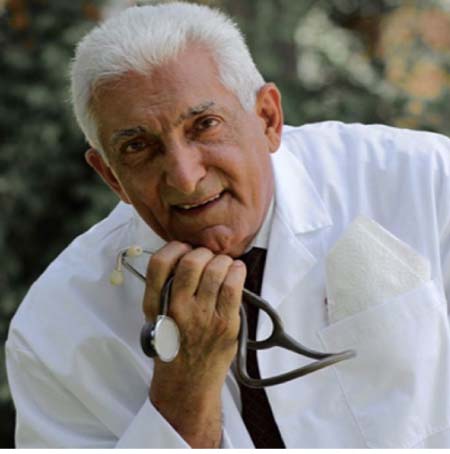
The black skin colour is healthy and very beautiful; do not bleach it ugly to skin cancer
Ivory Coast banned lightening creams by law why not in the GAMBIA
The shocking number of women in The Gambia now is bleaching their skin. Why do they want does that? Is fairer skin really more appealing than beautiful black skin?
Skin whitening, skin lightening, and skin bleaching refer to the practice of using chemical substances in an attempt to lighten skin tone or provide an even skin complexion by reducing the melanin concentration in the skin. Several chemicals have been shown to be effective in skin whitening, while some have proven to be toxic or have questionable safety profiles, adding to the controversy surrounding their use and impacts on certain ethnic groups.
People have been known to use lightening creams to ‘bleach’/lighten their skin complexions for years.
Celebrities and everyday folks alike have resorted to these measures without knowing the long term effects of these creams. In late April, Ivory Coast banned lightening creams (also referred to as “whitening” creams) because of the negative health effects associated with them – ranging from something as light as acne to devastating repercussions such as cancer.
Lightening creams reduce the amount of melanin in the skin. Melanin is the pigment that gives human skin, hair, and eyes their colour. Dark-skinned people have more melanin in their skin compared to light/fair-skinned people.
Harmful Effects of skin Bleaching
Harmful effects of bleaching include mainly two substances which are present in these are hydroquinone and mercury. Hydroquinone is very harsh chemical present in the bleach which makes the cell of your skin completely dead and this if once happens cannot ever be repaired. Also the Harmful effects of bleaching are also seen if you start bleaching your skin at a very young age that is may be below the age of twenty. As this is a young age your skin is very tender and delicate and thus the chemicals present in the bleach have many harmful effects on the skin.
To start with, variety is the spice of our life, such as variety in food, clothes, hairstyles, etc. Variety also abounds in nature. That is why all people on Earth belong to different types of skin colours, from white to yellow and to black. Our living environment accounts for the different skin colours we have. For example, in cold climatic regions such as Europe, inhabitants tend to have a lighter complex due to the cold weather, whereas in Africa, darker skin is better suited in the hot and humid climate.
Actually many beauticians and doctors advise us that by eating healthily, exercising and using body cream rich in Vitamin E, Aloe Vera and Collagen Elastin will produce more fascinating effects than applying mere bleaching creams.
All skin bleaching products contain one of the two active ingredients -- hydroquinone and mercury.
1. Hydroquinone lightens the colour of the skin areas to which it is applied by killing off the melanin-making cells - the melanolyte. It is also the active ingredient in ‘fade-off’ creams for freckles, age spots, etc.
Historical background: Hydroquinone was first use in the thirties. Some of the African-American employees found that spots of discolouration appeared on their skin.
The terms skin whitening, skin lightening, and skin bleaching covers a variety of cosmetic methods used in an attempt to whiten or lighten the skin.
Skin lightening or whitening is extremely controversial topic as it is closely intertwined with the detrimental effects on health, identity, self-image, racier supremacy and colonial mentality.
There is evidence to prove that most types of skin-whitening products use active ingredients (such as mercurous chloride) and hydroquinone which are certainly extremely harmful and caused skin cancer. Hydroquinone has now been banned in Europe and in many other countries can only be prescribed by a doctor for certain skin conditions.
In Asian and African countries including The Gambia, banned chemicals are still being used in skin lightening creams and can buy them in every corner in this country and even at Banjul and Serekunda Marked as cheap as D15.
Skin lightening/ bleaching is now a big deal in the Gambian society. It is such a big deal that the Medical professionals see it important to embrace a campaign geared at its discouragement in The Gambia. The practice is very serious because it addresses common concerns about the yearning for beauty.
The association with beauty, skin bleaching has become extremely popular. Every human have a desire to feel and be perceived as beautiful, and as such my concerns as medical professional about how to discourage people from it.
It seems like an uphill battle to me–trying to convince the women in my every day’s clinic to stop destroying their beautiful black skin when the colour cards are staked up against them.
Skin cancer is reported as one of the major causes of death amongst bleachers and therefore it is just a matter of time before we have a full blown epidemic on our hands. We must therefore strive to change behaviour by addressing physical, mental, and symbolic remnants of light-skinned superiority and dark-skinned inferiority which contributes to low self-esteem and confidence.
The solution to the problem lies in need to examine what is being done nationally to increase and inspire confidence about the beauty of the black skin and denounce the age old belief/ saying, “Nutten Black nuhGood !”
Skin-lightening creams are heavily promoted by many dermatologists and skin care experts to even out cosmetic conditions like vitiligo, liver spots, and other superficial blemishes.
What are the risks
The risk with these creams is that many of them contain a substance called hydroquinone, which a variety of studies have linked to:
Increased risk of cancer
Increased risk of adrenal gland problems
Increased risk of all health
Conditions associated with mercury
Increased risk of developing a rare metabolic disorder called ochronosis, which can cause physical changes to the skin and tissues surrounding the eyes, ears, and joints
Citing these and other potential dangers of using creams that contain hydroquinone, this past Tuesday, the Food and Drug Administration in the U.S.put forth a proposal to ban over-the-counter sales of skin-lightening products.
Don’t expect dermatologists and the many companies who sell hundreds of different skin-lightening products that contain hydroquinone to remain silent about the FDA’s proposal.
According to the L.A. Times, in the United States, approximately two-thirds of all skin-lightening products are available over-the-counter without a prescription. Who knows how many millions of dollars this translates to each month for companies that produce these products?
If you’re not convinced that skin-lightening products that contain hydroquinone are best avoided, consider that hydroquinone has already been banned for sale in the European Union, Australia, and Japan.
Perhaps the real issue here is the lack of encouragement that our society offers to people who feel badly about their physical appearances. There never seems to be a shortage of plastic surgeons, dermatologists, and other sales people who encourage people to change or hide what they don’t like about their looks.
Melanin and pigmentation
Uneven pigmentation affects most people, regardless of ethnic background or skin colour. Skin may either appear lighter or darker than normal; there may be blotchy, uneven areas, patches of brown to gray discoloration or freckling. Skin pigmentation disorders occur because the body produces either too much or too little melanin. Melanin is the pigment produced by skin cells. It is triggered, which creates the colour of skin, eyes, and hair shades.
Melanin has two major forms that combine to create varying skin tones. Eumelanin produces a range of brown skin and hair colour, while pheomelanin imparts a yellow to reddish hue.
Melanin provides some amount of sun protection for the skin by absorbing ultraviolet light. Darker skin collars are less susceptible to sunburn and the overall effects of sun damage.
The most popular bleaching creams contain 4% hydroquinone, a severely toxic and very powerful chemical also used in photo-processing and rubber production that can destroy the outer layer of the skin. However, cosmetic creams or treatments contain hydroquinone have been completely banned in the UK since 2001 and are illegal to supply, offer to supply or poses to supply.
Other dangerous ingredients include Colic acid (also used to preserve pink and red colours in seafood, has been linked to systemic toxicity and liver cancer); alpha hydroxyl acid (also used in chemical skin peels, causes increased sensitivity to the sun and UV light); and sodium hydroxide (also used in the manufacture of pulp, paper textiles and detergents, can cause burns, scarring and blindness).
Legal in the Gambia, Despite Cancer Potential
Hydroquinone, a product used in some skin bleaching agents, could have dangerous health consequences. The toxic substance is banned in the UK, but in The Gambia use of hydroquinone in over-the-counter allowed. In the United States Food and Drug Administration (FDA) says that testing cannot rule out hydroquinone’s potential cancer risk in humans.
Skin bleaching-using chemical or natural products to lighten skin colour-is common in the US and other countries and some psychologists say consumer demand can be traced to the belief that lighter-skinned or white people are more successful, intelligent, and sexually desirable.
Cosmetics industry experts feel that as Asian, African, and African-Caribbean communities grow, so too will ethnic spending power for products marketed to lighten skin tone, some containing hydroquinone. Cosmetics industry analysts say cosmetics companies realize there’s money to be made here and claim minority communities are an underserved market with a long tradition of buying bleaching products, legal or otherwise. There has been a perceptible increase in skin creams, soaps, and deodorants containing whitening and bleaching agents. Some experts blame consumer demand on the media cantering on fair-skinned celebrities, claiming the media promotes an image that those who are light-skinned are successful and attractive.
Colourism isn’t limited to any one ethnic group. Many in Africa are using bleaching cream to lighten their skin because they associate lighter skin with beauty. Despite attempts by the Ghanaian government to ban it, skin bleaching is on the rise.
Dermatologists (Skin specialist) say bleaching creams with hydroquinone are safe to reduce the appearance of age spots or smaller blemishes, but only if used as directed. But other skin specialists say abusing products, for example by rubbing the product on the entire face, neck, or body can be dangerous over time, saying that there is no safe way to bleach skin beyond its natural colour. Other experts say that skin bleaching, while very popular, contains toxic chemicals that are linked to weakened immune systems, organ failure, and even death.
Initially, the bleaching cream will appear to lighten the skin, but oxidation between the sun and chemicals starts darkening the skin. At this point, increased use of the cream tends to occur, causing the skin to break and chemicals to penetrate into the bloodstream and reach major organs where serious damage can occur.
The trend of skin bleaching in Africa is similar to that of tanning in the US. People tan their skin because they think tanned skin is more beautiful. As with skin bleaching, there are many risks involved with tanning. Evidence links UVA rays to malignant melanoma, the deadliest form of skin cancer. Overexposure to any Ultra violate rays can cause loss of skin elasticity, premature aging, and cancer; damage to the skin is irreversible.
Despite all the risks, people continue to try to make them more beautiful with dangerous methods like skin bleaching and tanning.
Finally I certainly join many Doctors and beauticians who advise us that by eating healthily, exercising and using body cream rich in Vitamin E, Aloe Vera and Collagen Elastin will produce more fascinating effects than applying mere bleaching creams to black skin colour.
For further information see Health Professionals in various Clinics, E-Mail to azadehhassan@yahoo.co.uk or text only to DR AZADEH on 7774469/3774469 during the working hours between 3-6pm
Author: DR AZADEH Senior Lecturer at the Medical School University of the Gambia, Senior Consultant in Obstetrics & Gynaecology, Clinical Director of Medicare Health Services





